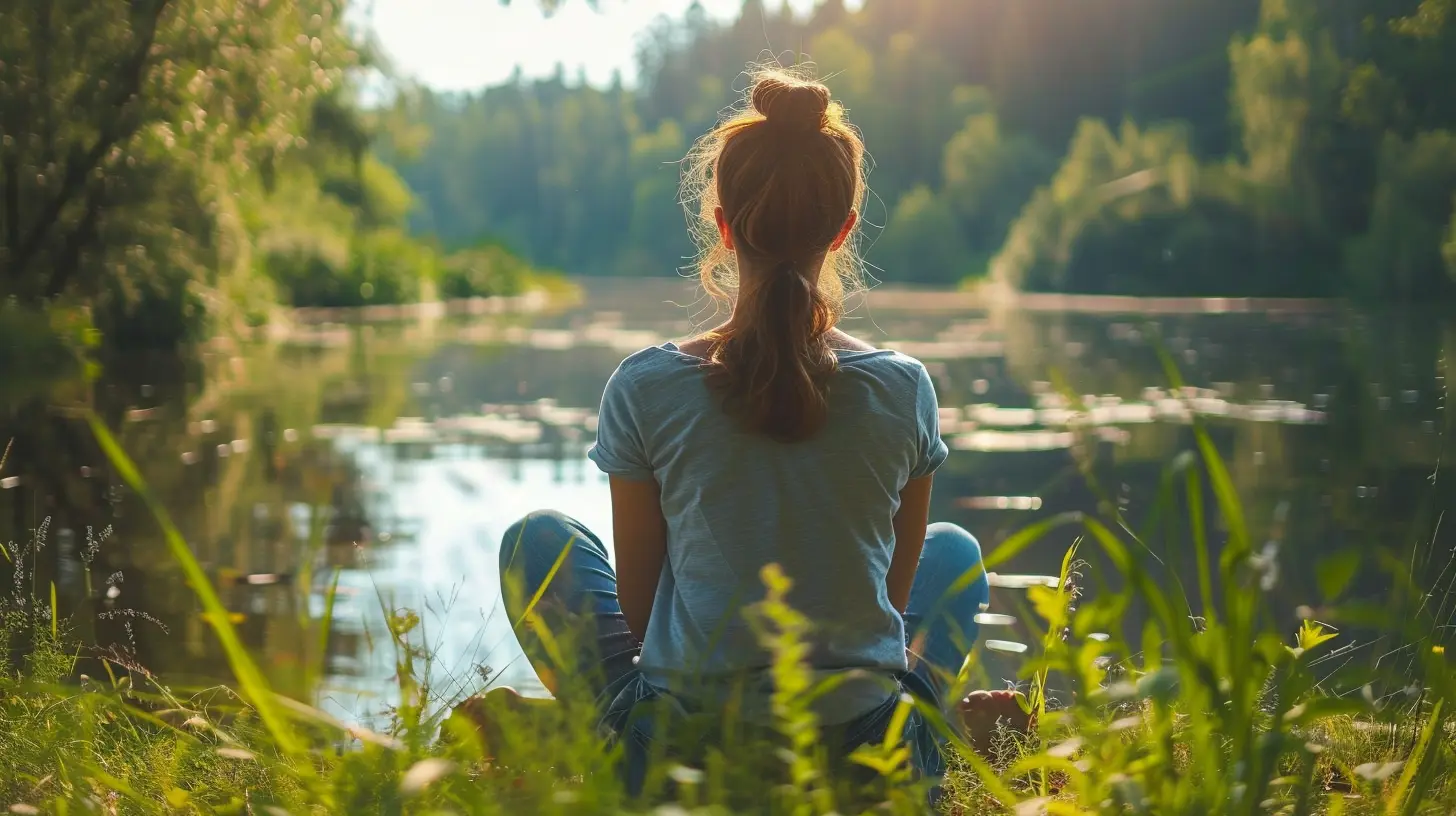Nature Therapy: Embrace the Outdoors to Alleviate Stress
6 August 2025
Let’s face it—life can get pretty darn hectic. Between work deadlines, traffic jams, endless notifications, and a to-do list that never seems to end, it’s no wonder we’re all carrying a bit (or a lot) of stress. But what if there’s a way to hit the reset button without booking an expensive retreat or diving into complicated self-help strategies? Enter Nature Therapy—your new favorite way to melt stress away.
Spending time in nature isn’t just a “nice to have” activity or something you save for weekends. It’s a powerful, science-backed way to dial down stress, boost your mood, and reconnect with what really matters—your well-being.
Let’s walk through why nature is your best (and most affordable) stress relief tool and how you can start embracing the great outdoors today.
What Is Nature Therapy Anyway?
Imagine stepping outside, feeling the sun on your skin, hearing birds casually chatting in the trees, and breathing in fresh, crisp air. That, my friend, is nature therapy in action.Also known as ecotherapy or green therapy, nature therapy involves spending intentional time in natural settings to improve mental and emotional health. This can be as simple as a walk in the park or as immersive as a weekend camping trip. The idea is to let nature do its healing magic—to calm the chaos in your mind and reduce stress in your body.
Nature therapy isn’t just a feel-good concept—it’s backed by science. Researchers have found that even 20 minutes in a green space can significantly lower cortisol levels (aka your stress hormone). Talk about a quick win!
How Nature Helps Battle Stress
You might be wondering, “Why does being outdoors make me feel better?” Great question! Let’s break it down.1. Cortisol Down, Calm Up
Cortisol is your body’s built-in alarm system. It revs up when you’re stressed and keeps you in “fight or flight” mode. The problem? In today’s world, we rarely turn that alarm off. Nature acts like a reset button, helping your body switch from survival mode to relaxation mode.A study published in Frontiers in Psychology found that participants who spent just 20 minutes in nature had a significant drop in cortisol levels. That’s less than the time it takes to watch an episode of your favorite sitcom!
2. Natural Light Boosts Mood
Sunshine is nature’s antidepressant. Exposure to natural light increases serotonin production in the brain, which helps regulate mood and promotes happiness. It also resets your circadian rhythm, improving your sleep—another huge factor in stress management.3. The Power of Green and Blue Spaces
We’re naturally drawn to green (trees, grass, leaves) and blue (lakes, rivers, skies) spaces. These colors aren’t just pretty—they’re deeply soothing to the human brain. In fact, studies show that views of these natural colors help slow heart rate and ease mental fatigue.4. Unplug to Recharge
Let’s be real—our gadgets are exhausting. Constant notifications, emails, and doom-scrolling take a toll on our mental bandwidth. Nature therapy offers a gentle escape. It gives your eyes and brain a break from screens and gently nudges you into the present.
Different Types of Nature Therapy You Can Try
Not everyone’s a tree-hugging, bug-loving forest dweller (though no judgment if you are!). The beauty of nature therapy is that it’s flexible. Choose what suits your lifestyle and comfort level.🌳 Forest Bathing (Shinrin-Yoku)
Straight from Japan, shinrin-yoku means “taking in the forest atmosphere.” It’s not about hiking to burn calories—it’s about being present with trees. Walk slowly, breathe deeply, and engage your senses. Smell the pine, feel the breeze, listen to the leaves rustle. That’s it. It’s mindfulness, but outdoors.🚶♀️ Nature Walks
Not a fan of deep forests? No problem. A simple walk through a local park, neighborhood trail, or botanical garden works wonders. Bring a friend or go solo for some real “me time.”🌼 Gardening
Turns out, playing in the dirt is good for your brain. Gardening is a form of hands-on nature therapy. It grounds you (literally), engages your senses, and rewards your efforts with vibrant results—like flowers, veggies, or your very own herb garden.🧘 Outdoor Meditation or Yoga
Why meditate indoors when you can do it in a quiet meadow or by a babbling brook? Let nature be your backdrop to mindfulness. Even a few deep breaths under a tree can ground your thoughts and quiet your inner storm.🏕️ Camping and Nature Retreats
If you’re up for unplugging completely, consider a camping trip. The combo of fresh air, outdoor activity, and detachment from tech creates a powerful mental reset. Plus, s’mores taste 100% better when you’re surrounded by trees.
Mental and Physical Benefits of Nature Therapy
Still not convinced? Let’s dig into some of the proven benefits of nature therapy on both your mind and body.💆♀️ Reduces Anxiety and Depression
Studies have consistently shown that immersing yourself in nature can reduce symptoms of anxiety and depression. Green spaces offer a non-judgmental environment where you can simply be yourself—free from stress, comparison, or performance pressure.🧠 Boosts Focus and Creativity
Ever notice how your brain feels foggy after hours indoors? Nature has a way of clearing it up. Exposure to natural environments restores mental energy, improves concentration, and even enhances creative thinking.😌 Improves Sleep Quality
Less stress + more sunlight = better sleep. It’s a simple equation. Natural light regulates melatonin production (your sleep hormone), while reduced anxiety helps you fall asleep faster and stay asleep longer.❤️ Lowers Blood Pressure and Heart Rate
No surprise here: if nature reduces stress, it’s also going to be kind to your heart. Regular nature exposure helps regulate blood pressure, slows heart rate, and may even reduce your risk of cardiovascular disease.How to Make Nature Therapy Part of Your Routine
We get it—you’re busy. But integrating nature therapy into your routine doesn’t have to mean quitting your job and living off the grid. Here’s how to make it work, one step at a time.1. Start Small and Stay Consistent
Aim for at least 20 minutes a few times a week. Morning walk? Lunchtime park break? Backyard stargazing? All of it counts. The key is consistency, not intensity.2. Create a Green Space Around You
Can’t get to a park every day? Bring nature to you. Add plants to your home or workspace. Open the windows. Hang nature-inspired artwork. Even small touches of green can soothe the mind.3. Leave the Phone Behind (or at Least on Silent)
If your phone goes with you into nature, it kinda defeats the purpose, right? Try leaving it behind—or switch it to airplane mode—to stay present.4. Make it Social
Nature therapy doesn’t have to be a solo gig. Invite a friend for a walk, organize a family picnic, or start a garden club. Social connection plus green space equals double the stress relief.5. Tune into Your Senses
The next time you’re outdoors, take a mindfulness moment. What do you see? Hear? Smell? Touch? Engaging your senses helps break the hamster wheel of anxious thoughts.A Note for the Skeptics
Still on the fence? It’s okay. Maybe nature therapy sounds a bit too “woo-woo” at first. But here’s the thing: it’s free, it’s simple, and it works. You don’t need fancy gear or a forest in your backyard. You just need a willingness to step outside and breathe a little deeper.Remember, healing doesn’t always come in the form of a prescription or a four-week program. Sometimes, it looks like bare feet in the grass, sunlight on your face, or a quiet bench under your favorite tree.
Final Thoughts: Nature Is the Original Healer
We’ve been nature’s children long before we became city dwellers and desk jockeys. Getting back to our roots—literally—can be the balm your overworked brain needs.Nature therapy isn’t just about escaping stress. It’s about reconnecting with something timeless, something bigger than us, and something beautifully simple. Whether you’re hiking a forest trail or just sipping coffee on your porch surrounded by plants, you’re tapping into a powerful source of peace.
So next time you feel the weight of the world on your shoulders, don’t rush to fix it with screens or sugar or stress-scrolling. Try stepping outside instead.
Your body, mind, and perhaps even your soul, will thank you.
all images in this post were generated using AI tools
Category:
Stress ReliefAuthor:

Jackson Mahoney
Discussion
rate this article
1 comments
Ryan Hines
Nature therapy isn't just a trend—it's a necessity. Step outside, breathe deeply, and let the healing power of nature transform your well-being.
August 24, 2025 at 3:33 PM

Jackson Mahoney
Absolutely! Nature therapy offers profound benefits for mental and physical health, and reconnecting with the outdoors is essential for overall well-being.


